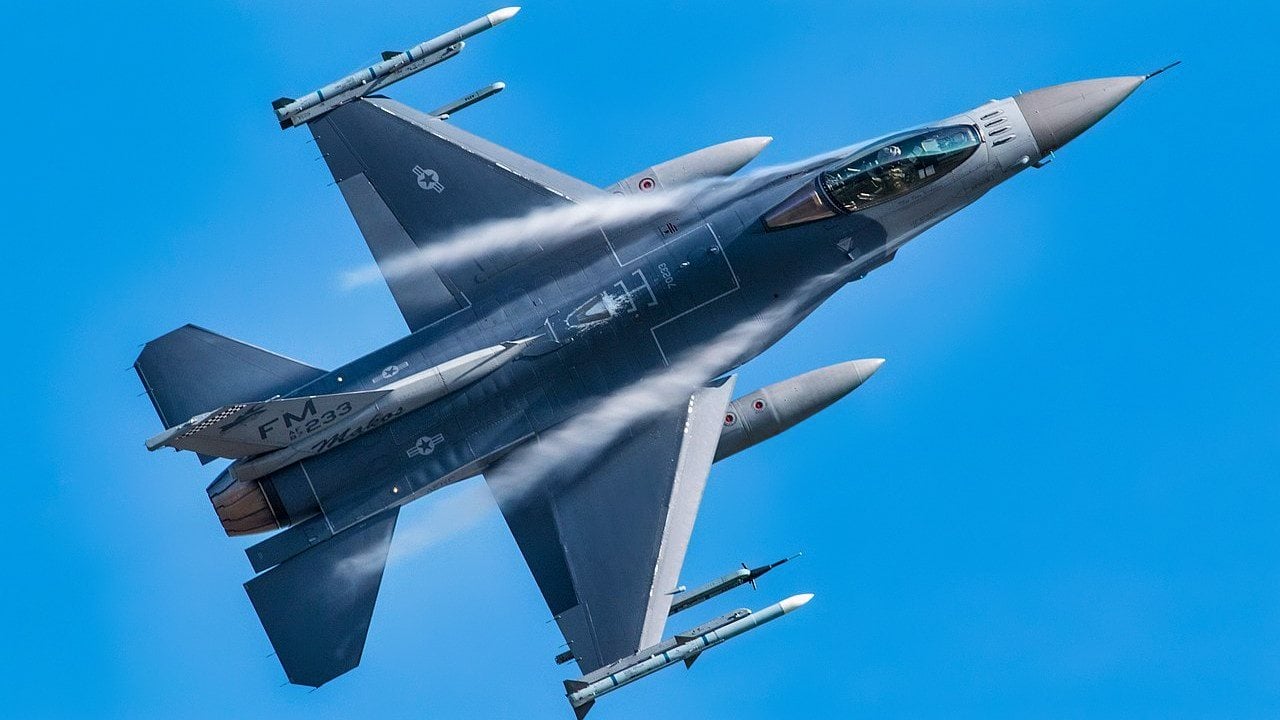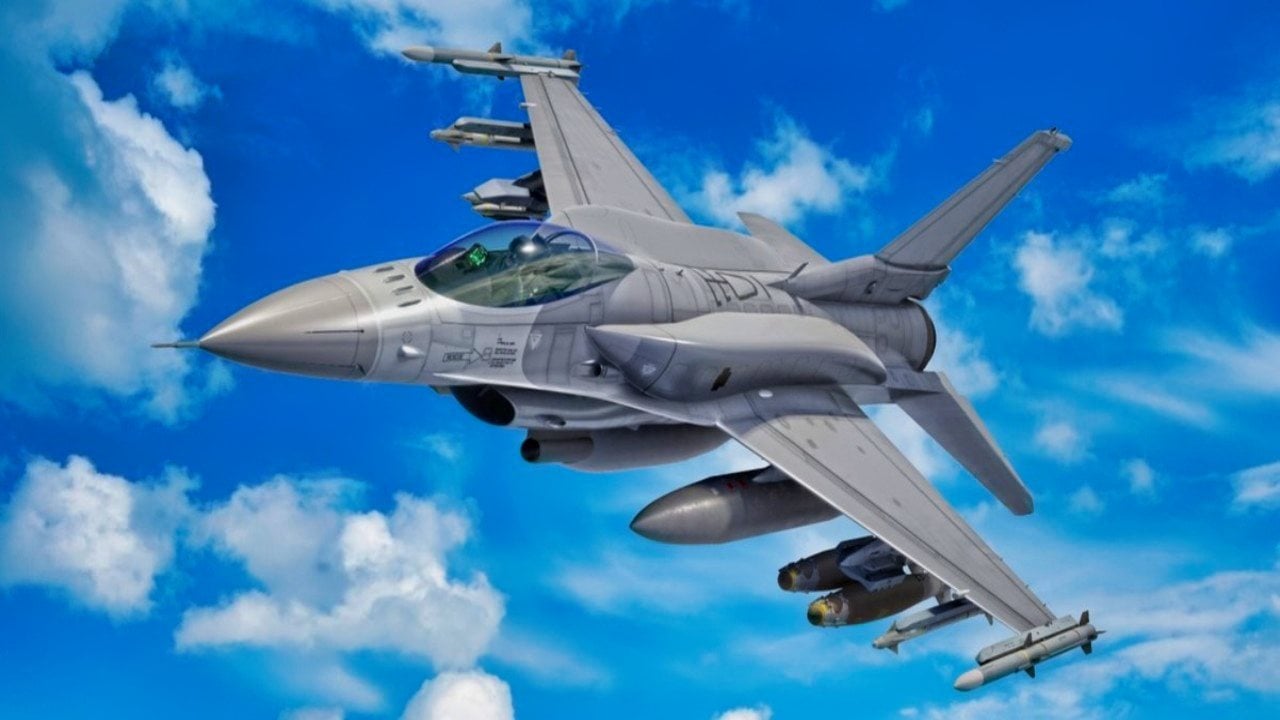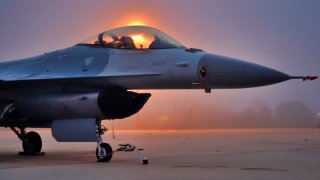F-16X: The U.S. Air Force's Great Fighter Jet 'What If'
The F-16X, also known as the Falcon 2000, was a proposed evolution of the F-16 Fighting Falcon that incorporated advanced features inspired by the F-22 Raptor. It featured a tailless design, thrust-vectoring engines, and composite materials for enhanced stealth, maneuverability, and fuel efficiency.
Summary and Key Points: The F-16X, also known as the Falcon 2000, was a proposed evolution of the F-16 Fighting Falcon that incorporated advanced features inspired by the F-22 Raptor. It featured a tailless design, thrust-vectoring engines, and composite materials for enhanced stealth, maneuverability, and fuel efficiency.

-The F-16X was envisioned as a cost-effective, next-generation warplane with advanced avionics and longer range, potentially serving as an affordable alternative to the F-35 Lightning II.
-Despite its potential, the F-16X was never produced, leaving it as one of the most intriguing "what ifs" in U.S. Air Force history.
The F-16X Should Have Become the Primary Warplane for the USAF
The U.S. Air Force’s greatest warplane until the F-22 Raptor came along was the F-16 Fighting Falcon. Believe it or not, though, the F-16 could have been even greater. Over the decades, multiple proposals have forwarded some frankly wild variants of the F-16.
One of those was the F-16X, otherwise known as the Falcon 2000.
The F-16X would have gone into production in 2010 had the Pentagon approved the proposal. It incorporated many designs inspired by the F-22 Raptor.
Newer composite materials were planned to be used in the construction of this warplane. The bird’s weight would thus have been greatly reduced, increasing the aircraft’s overall performance. The F-16X also included a new wing design inspired by the F-22. These new wings were more aerodynamically sound. They increased the plane’s life and reduced drag. The bird could go faster than its F-16 predecessor and had much better maneuverability.
The F-16X was meant to be stealthier than the F-16. Between its composite skin and its tailless structure, the F-16X would have been difficult for enemies to track with their radar. Thus, an F-16X in combat would have considerable advantages over any enemy aircraft.
The proposed F-16X was ahead of its time in other ways.
Some Key Features
One key design feature for the F-16X was that it was meant to be a tailless bird that used thrust-vectoring engines to direct the plane in flight. These capabilities were lightyears ahead of the original F-16.They were unlike anything the Air Force was operating other than its fifth-generation warplanes.
The tailless design would also appear in the X-44 MANTA warplane proposed as a follow-on to the successful F-22 program. When the X-44 never made it off the drawing board, the dream of a tailless, vector-thrust-powered bird shifted into the plans for the Air Force’s sixth-generation warplane, the Next Generation Air Dominance.
The F-16X’s engines were meant to increase fuel efficiency and range while reducing the amount of aerial refueling needed for long-distance missions. According to F-16.net, the proposed F-16X, “would have twice the range of the F/A-18 E/F at two-thirds the cost.”
According to Key Aero, the increased fuel efficiency and range of the F-16X would have allowed it to carry an even more incredible suite of armaments than its F-16 brother.

This bird had an impressive array of new systems that would ultimately be incorporated into future variants of the F-16, as well as other Air Force planes. The F-16X had an improved cockpit layout, possessing a better ergonomic design and multiple advanced display systems.
The F-16X had a very advanced avionics package and sensor suite as well. It was built with state-of-the-art radar and electronic warfare capabilities, along with advanced targeting systems that allowed the F-16X to engage targets with more precision at greater distances.
An Affordable F-35?
America’s F-16X was a tale of what could have been. A truly next-generation design for a fraction of what supposed next-generation warplanes cost, it probably would have been a better selection than even the F-35 Lightning II, which has become the U.S. military’s primary warplane in the last decade. The F-16X included next-generation capabilities at competitive prices.
They were also easier to build and maintain, since the supply chain was already primed for supporting the mission of the F-16.
Alas, the government, in its infinite wisdom, opted instead to leave the F-16X on the drawing board in favor of the F-35.
It is fun to speculate about what might have been. And the F-16X is one of the biggest “what ifs” out there.
Author Experience and Expertise: Brandon J. Weichert
Brandon J. Weichert, a National Interest national security analyst, is a former Congressional staffer and geopolitical analyst who is a contributor at The Washington Times, the Asia Times, and The-Pipeline. He is the author of Winning Space: How America Remains a Superpower, Biohacked: China’s Race to Control Life, and The Shadow War: Iran’s Quest for Supremacy. His next book, A Disaster of Our Own Making: How the West Lost Ukraine, is due October 22 from Encounter Books. Weichert can be followed via Twitter @WeTheBrandon.
All images are Creative Commons or Shutterstock.
From the Vault
Russia Freaked Out: Why the U.S. Navy 'Unretired' the Iowa-Class Battleships
Battleship vs. Battlecruiser: Iowa-Class vs. Russia's Kirov-Class (Who Wins?)
Image Credit: Creative Commons and/or Shutterstock.


